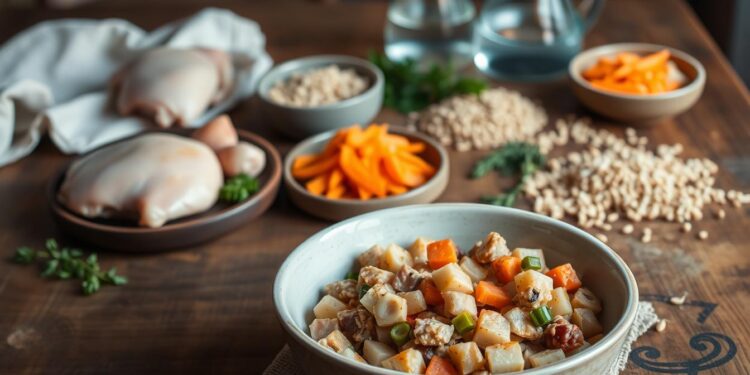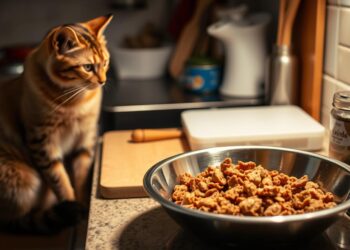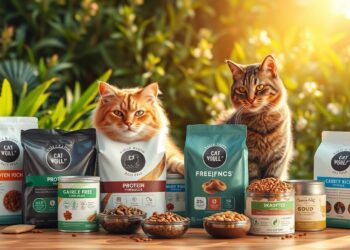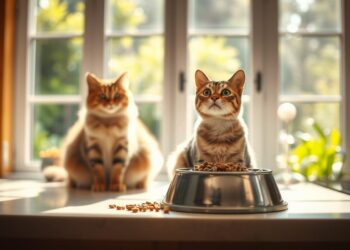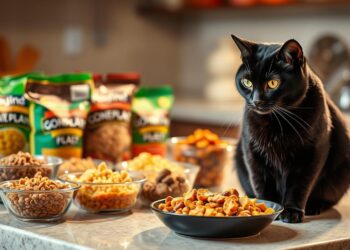As a pet owner, there’s nothing more important than ensuring your furry friend is getting the nutrition they need to thrive. Commercial pet food often contains fillers and mystery ingredients that can be detrimental to your pet’s health. By making healthy meals at home, you can control the ingredients and nutritional content, providing a healthier alternative to commercial products.
Preparing easy meals for your pet can be a simple and rewarding process. With a few basic ingredients, you can create nourishing dishes that cater to your pet’s specific needs. This approach not only improves your pet’s well-being but also strengthens the bond between you and your pet.
Why Make Your Own Cat Food at Home
Creating your own cat food at home gives you the flexibility to choose the ingredients and tailor the diet to your cat’s specific needs. By doing so, you can avoid fillers and mystery ingredients commonly found in commercial cat foods.
Health Benefits of Homemade Cat Food
Homemade cat food offers several health benefits, including the ability to avoid unwanted additives and preservatives found in commercial cat food. Naturally, cats thrive on a diet rich in protein from animal sources, which can be ensured through carefully selected ingredients.
Understanding Your Cat’s Nutritional Needs
Cats are obligate carnivores, requiring a diet primarily based on meat. Understanding their nutritional needs is crucial for creating a balanced homemade cat food recipe. The table below outlines the essential nutrients your cat needs:
| Nutrient | Source | Importance |
|---|---|---|
| Protein | Chicken, Fish, Beef | Essential for muscle growth and maintenance |
| Taurine | Meat, Fish | Crucial for heart health and vision |
| Vitamin A | Liver, Fish Oil | Important for vision and immune function |
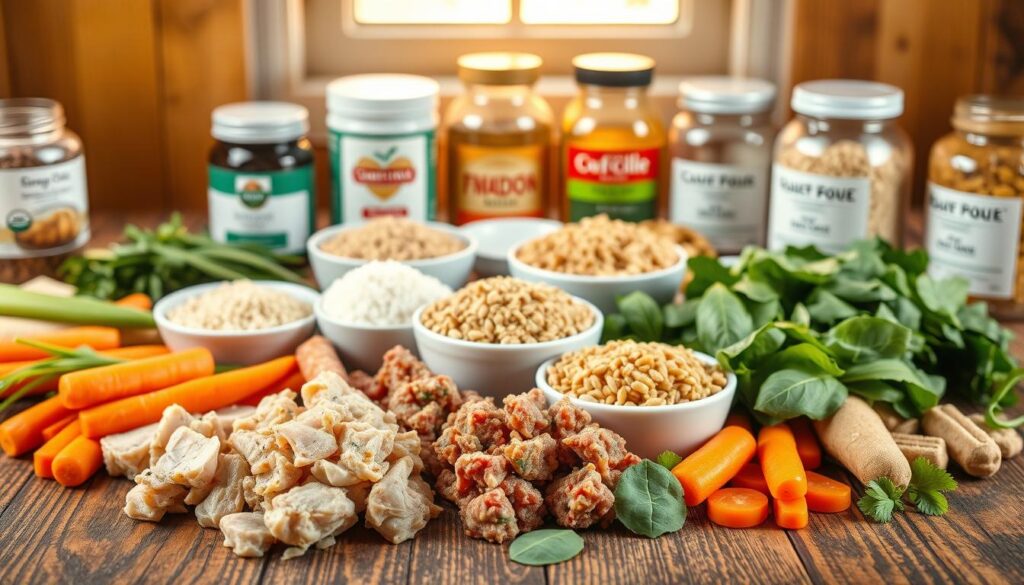
Essential Homemade Cat Food Recipes for Everyday Meals
For cat owners looking to improve their pet’s diet, making homemade cat food is a simple and effective way to ensure they’re getting the nutrients they need. Homemade cat food can be tailored to your cat’s specific needs, whether they’re dealing with sensitive stomachs or require a specific diet.
Here are a couple of simple and nutritious recipes to get you started:
Basic Chicken and Rice Recipe
This recipe is a great starting point for cats with sensitive stomachs. It’s easy to digest and provides essential nutrients. To make it, you’ll need boneless, skinless chicken breast, cooked rice, and a bit of olive oil. Simply cook the chicken, mix it with cooked rice, and add a drizzle of olive oil.
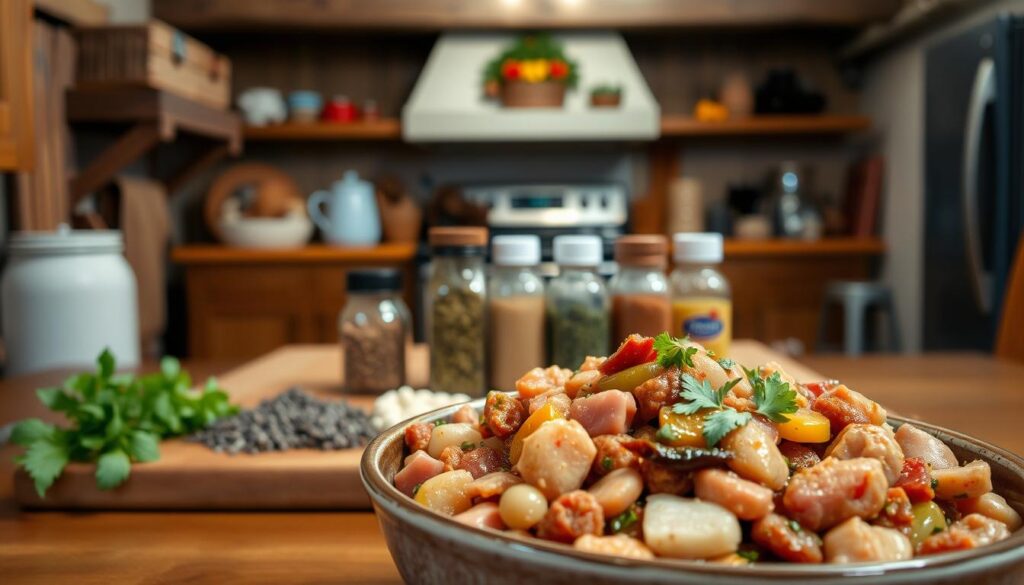
Simple Fish-Based Cat Food
Fish is a great source of protein for cats, and can be used to make a delicious and healthy homemade cat food. To make a simple fish-based recipe, you’ll need cooked fish, sweet potatoes, and green beans. Simply cook the fish, mix it with cooked sweet potatoes and green beans, and serve.
These recipes are just a starting point, and can be modified to suit your cat’s individual needs. By making your own cat food at home, you can ensure that your cat is getting the best homemade cat food possible.
Specialized Homemade Cat Food Recipes for Specific Needs
For cats with particular needs, such as sensitive stomachs or high activity levels, homemade cat food can be tailored to meet their nutritional demands. Crafting the right recipe can make a significant difference in their health and well-being.
Recipes for Cats with Sensitive Stomachs
Cats with sensitive stomachs require ingredients that are gentle on their digestive system. Boiled chicken and plain rice can be a soothing combination. Adding plain, cooked pumpkin can also help ease digestive issues.
High-Protein Options for Active Cats
Active cats need a diet rich in protein to maintain their energy levels. Incorporating lean meats like turkey or salmon into their homemade cat food can provide the necessary protein. Ensuring a balance with other nutrients is also crucial.
Enticing Homemade Cat Food Recipes for Picky Eaters
Picky eaters can be challenging, but adding variety to their meals can help. Mixing in some wet food or adding finely chopped cooked vegetables can make the meal more appealing. Ensuring the ingredients are fresh and of high quality is key.
| Cat’s Needs | Recommended Ingredients |
|---|---|
| Sensitive Stomach | Boiled chicken, plain rice, cooked pumpkin |
| Active Lifestyle | Lean meats (turkey, salmon), balanced nutrients |
| Picky Eaters | Wet food, finely chopped cooked vegetables, fresh ingredients |
Conclusion: Making the Switch to Homemade Cat Food
Switching to healthy homemade cat food can be a significant step towards improving your cat’s overall health and well-being. By preparing easy cat food recipes at home, you can ensure that your cat receives the necessary nutrients without the additives found in commercial cat food.
Consulting with a veterinarian is crucial to ensure that your homemade cat food is well-balanced and meets your cat’s nutritional needs. They can provide guidance on the best ingredients and recipes tailored to your cat’s specific requirements, whether it’s for a sensitive stomach, high energy levels, or picky eating habits.
By taking a proactive approach to your cat’s diet, you can potentially reduce the risk of health issues and enhance their quality of life. Start exploring simple and nutritious recipes today, and work closely with your veterinarian to create a personalized diet plan that suits your cat’s unique needs.
